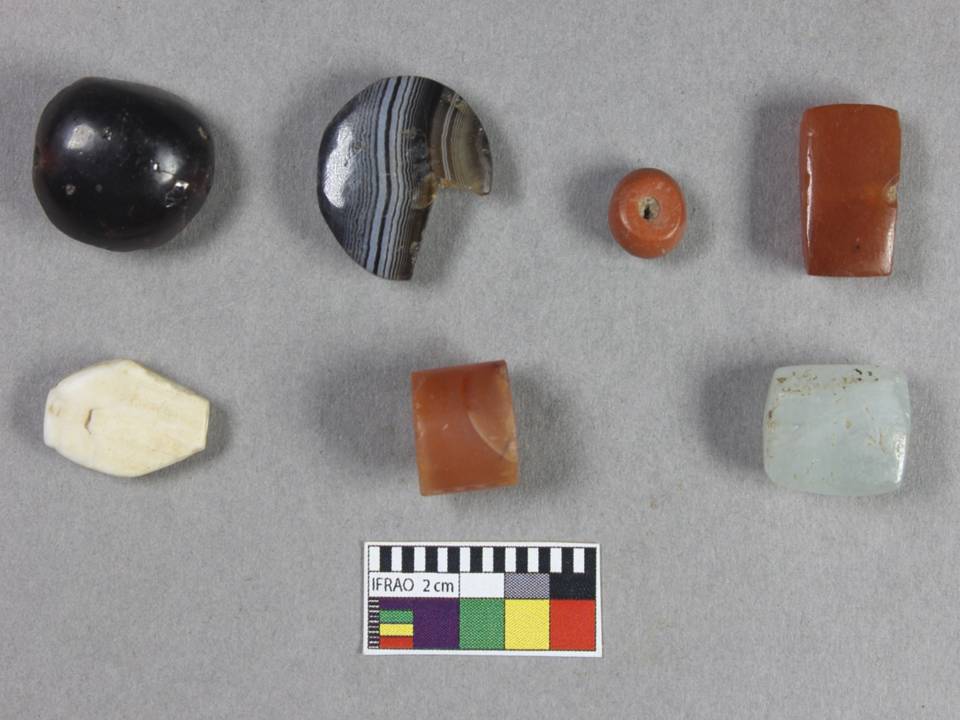A Lost, Ancient Civilisation? Archaeologists Uncover Mysterious Ruins in Odisha
“From the findings of the excavation it can be concluded that the habitation was an urban settlement belonging to the Mauryan to Kushan period, which was about 2300 years back. The imperial coins with punch marks were issued during the Mauryan and Magadhan period.”

An excavation team from the Archaeological Survey of India (ASI) has discovered fascinating artefacts and other remains at the Asurgarh fort in the Kalahandi district of Odisha.
These remains, archaeologists say, may point towards an advanced civilisation dating from the Mauryan and Kushan period, about 2300 years ago.
Among the artefacts unearthed were pieces of jewellery like earrings and toe rings made of silver and copper, beads made of agate, beryl, carnelian, coral, garnet and jasper, and coloured glass bangles. Additionally, wheel-like iron equipments, arrowheads, pestles and sling balls were also found.
These are all indicative of the flourishing trade in Odisha in those times.

Speaking to the Times of India, Dibishada Brajasundar Granayak, the superintending archaeologist of the excavation branch of ASI said, “From the findings of the excavation it can be concluded that the habitation was an urban settlement belonging to the Mauryan to Kushan period, which was about 2300 years back. The imperial coins with punch marks were issued during the Mauryan and Magadhan period.”
Explaining what could be inferred from these antiquities, Garnayak said, “These findings suggest [that] the habitants were living in an urban settlement and had a materialist lifestyle. The material culture in the form [of] beads and bangle in different shapes and colours shows the artistic talent of the natives of that time. The findings of coral beads and Imperial variety of silver punch mark coins strongly indicates about long-distance trade and association of hinterland people with seafaring people.”
You may also like: Discovery of Dinosaurs: The Fascinating Story of India’s Prehistoric Residents!
In fact, sea trade would start in Odisha (which was a part of the Kalinga state, ruled by Emperor Ashoka) on a large scale in the 2nd century BC and the discoveries in Kalahandi are indicative of the beginning of this.
In the coming centuries, Kalinga and Indonesia would go on to have strong trade relations, and you can read the details about this fascinating chapter of the Odisha history here.

Apart from the pieces of jewellery, archaeologists also discovered circular brick structures. Their designs and features, like the grooves and holes for socketing, give us an insight into the social life and technological advancement of those times.
“The present archaeological work reveals a number of brick structures,” Granayak told The Hindu, adding that “Wedge-shaped bricks are also noticed in the circular structures. Most of the structures have terracotta tiles with grooves and holes for socketing… The Asurgarh people during that time probably used stone rubbles and tile fragments for flooring their houses and the streets.”
The fort was surrounded by moats on its eastern, northern and southern sides.

“Close to the western rampart, the river Sandul flows to the north thereby forming a natural moat on the western side of the fort. On the eastern side of the fort, there is an extensive lake. The fort had four wide gates in four cardinal directions and at each gate was installed one guardian deity. These guardian deities are named as Ganga at the eastern gate, Kalapat at the western, Vaishnavi at the northern and Dokri at the southern gate,” said the archaeologist to TH.
You may also like: Uncovering the Indus Valley ‘Couple’: Here’s What They Reveal About Our Ancestors
The excavations that started in November 2018 with the aim of discovering the cultural significance and the patterns of settlements in ancient Odisha are still in full force.
Researchers are hoping that they find “more clear settlement patterns and important evidence regarding the historical importance of the site and its relation with other important centres of ancient India will emerge.”
(Edited by Gayatri Mishra)
Like this story? Or have something to share? Write to us: [email protected], or connect with us on Facebook and Twitter.
This story made me
- 97
- 121
- 89
- 167
Tell Us More
We bring stories straight from the heart of India, to inspire millions and create a wave of impact. Our positive movement is growing bigger everyday, and we would love for you to join it.
Please contribute whatever you can, every little penny helps our team in bringing you more stories that support dreams and spread hope.



















